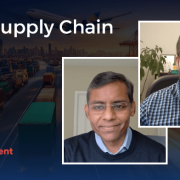A cloud migration is the process of moving applications, data, and other components hosted internally on servers to a cloud-based infrastructure. Whether you are a “Cloud proponent” or a (non-vocal) opponent, chances are high that your organization has already embarked upon its cloud journey as it is becoming a top priority for most businesses.
Different Types of Data Migrations
Traditionally, a cloud migration strategy is considered as moving a virtual machine from on-premises to Cloud. However, recently, there are rise in different use cases such as cloud-to-cloud migrations and reverse cloud migrations.
On-premise to Cloud: Infrastructure, Database, Development platforms and Application everything candidate for cloud migrations.
Cloud-to-Cloud migration: Scenario among customers that want to avoid vendor lock-in and adopt a multi-cloud strategy.
Reverse cloud migration: a scenario where you’re looking to migrate off the cloud. It cloud be due to regulatory or some offline working needs.
Key Benefits of cloud migrations
Migrating to the cloud is a complex process that enables tremendous potential for your business. But complications created by inflexible legacy systems and vendor-driven lock-in can drain your investments and slow down transformation.
A cloud migration brings about various opportunities beyond cost saving. Modernization, scalability, agility, security, and compliance are some key know benefits. What you might not consider while defining your migration strategy are the added benefits like improved business agility, operational excellence, enhanced performance efficiency, automations, and geographical expansions that also come when migrating your data and analytics systems to the cloud.
Furthermore, modernization helps your business to empower DevOps, artificial intelligence, machine learning, real-time processing, and more.
Cloud migration strategies
There are countless possible architectures of cloud migrations beginning with three hosting options, IaaS, PaaS & SaaS, and 100s of various technologies, below are common strategies helps customer planning migration. But ultimately your migration largely depends on your current state and how your data and analytics platforms are proposed for future state.
Retain (Referred to as re-visit.) – Do nothing for now, keep on-premise. Examples for such applications are too much business risk, compliance, regulatory requirements, and less shelf life.
Retire – Remove applications that are no longer needed.
Re-host (Referred to as a “lift and shift.”) – The lift and shift migration approach migrates your application and associated data to the cloud with minimal or no architecture changes.
Re-platform (Referred to as “lift, tinker, and shift.”) – Make cloud optimizations to achieve a tangible benefit. You will not change the core architecture of the application. An example of this is replacing database backends of applications with a corresponding PaaS database solution of a cloud provider.
Re-factor / Re-architect – Re-architecting usually leads to the highest transformation costs and is mostly done for critical applications that need modernization, like when moving on-premise analytics to a real-time analytics cloud native solution.
Re-purchase – Move from perpetual licenses to a software-as-a-service model. Examples for such is moving CPU based licence to “Pay as you go”.
Remember that no migration will ever look the same, but with Infocepts we have the proven expertise, frameworks, and technologies to help we narrow down your problems, develop pragmatic roadmaps, and provide accelerated solutions to achieve your objectives.
Get started today with Infocepts and start your journey towards modernization.
Recent Blogs

Fashion Retail in the Age of AI: Redefining Design and Customer Experience with Data & Intelligence
April 11, 2025

Navigating the Tariff Shock: How AI and Advanced Analytics Fuel Supply Chain Resilience
April 7, 2025

From Data to Decisions: The Evolving Role of Data Science & AI in Supply Chain
March 20, 2025

Transforming Enterprise AI with AWS Bedrock and Nova
March 11, 2025


